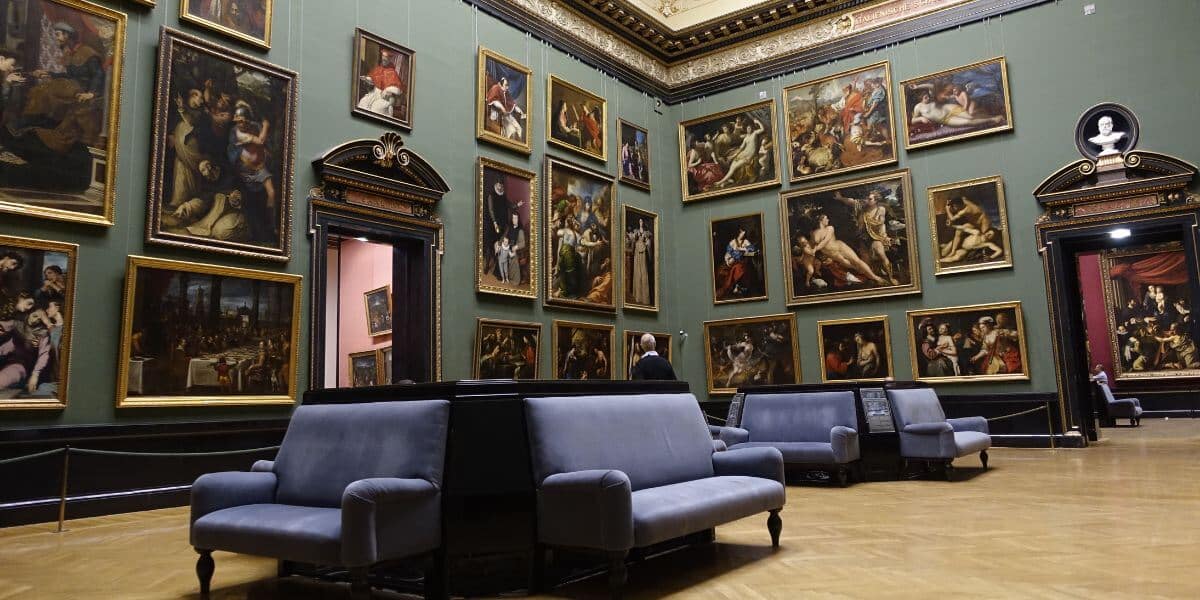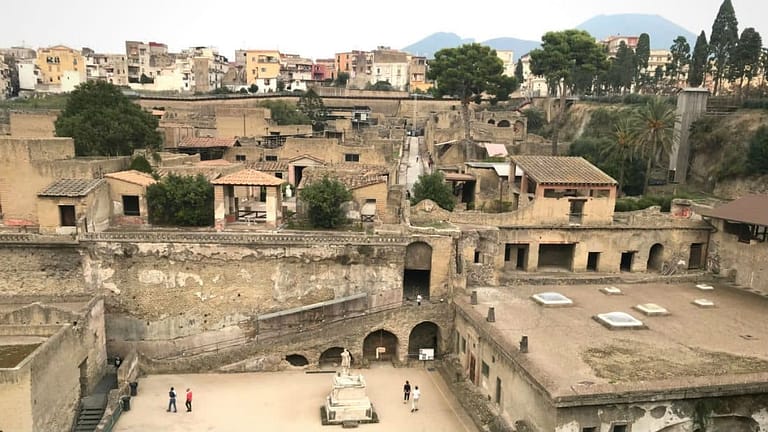Ultimate Museum Guide for Cultural Travellers
I love visiting museums, and if you’re here, I assume you either love them too or you’re looking for information to help you make the best of your experience. While museums might feel overwhelming and daunting for many, it’s all about how you approach them. This museum guide is your one-stop destination for everything related to museums and galleries.
So what exactly is a museum guide? Well, it’s a resource hub with everything you need to plan a visit to any museum. From museum passes, virtual museums and how to plan your visit, here is what you need to know when planning your visit. No matter what country you visit, the rules are pretty much the same.
Affiliate Disclosure – This post contains affiliate links. If you make a purchase through these links, I may earn a commission. This doesn’t affect your purchases or any fees you may pay for the product or service. Read more in my DISCLAIMER.
Museum guide: the basics
There are two ways of going about finding museums to visit. You might already have a museum in mind that you want to see (for example, The British Museum), or you might decide to visit museums based on the city you’re visiting. Either way, you can easily search for “museums in X” and get a list of options.
This approach will give you an idea of what to expect. There are many different types of museums out there, and finding the one that suits your tastes is the key to actually enjoying the visit. A quick online search will tell you what kind of exhibitions you can expect and if there are any temporary exhibits that align with your stay.
How to plan a museum visit
Checking out the museum website ahead of your visit is a great way to find out ticket prices, admissions and if there are any closures. As many museums often act as event venues, certain areas might be closed to the public on those days. At the same time, this might offer an opportunity to attend a special event while also getting free admission to the museum.
Many museums often have joint admissions with others in the same city. If you’re already planning on visiting a certain one, check to see if there are any other museums that you can visit at the same time. These combination tickets are usually cheaper than buying admission for each venue separately. Plus, that way, you can plan your visit and time at that destination.

Some destinations, like London, offer free entry to most museums, but that’s not the standard practice. However, even the biggest museums, like the Louvre, offer free admission on certain days. Usually, that’s the last Sunday of every month, but it can also be a random day, like a certain Wednesday, for example.
How to make the most of your time at a museum
This museum guide is a resource for planning your visit, so here are my tips for planning your visit. As much as I love museums, I know that they can be a bit overwhelming. After all, there are only so many vases, statues or paintings you can look at before they all start to look the same. The key to getting the most out of your visit is to pace yourself and not overdo it.
A usual museum visit can last anywhere from an hour and a half to three hours. I wouldn’t recommend spending more time than that unless you really, really love the place. Here is where online planning can save you time. See which exhibits you want to see and which ones are “nice to see.” Spend your time on those sections.
This might be obvious, but make sure to wear comfortable shoes as you’ll be doing a lot of walking. The temperature in museums is usually kept cool to protect the exhibits, so you might want to bring a light sweater or wear layers. If you have a large bag or backpack, you’ll likely have to check it in or leave it in a locker, so don’t expect to carry extra layers with you.
Museum guide to taking pictures
While our tendency to document our experiences has become ubiquitous, taking pictures in museums is not always recommended. In fact, some places have strict guidelines as to what you can video/photograph. Be mindful of the rules, as they are there to protect irreplaceable exhibits. There is usually signage as to what can be photographed (usually flash is prohibited), and if in doubt, ask the staff for clarification.
Museum guide: different types of museums
Here is a quick museum guide to the different types of museums out there.

General/historical museums
According to Britannica.com, the collections at general museums are on “more than one subject […] were founded in the 18th, 19th, or early 20th century. Most originated in earlier private collections and reflected the encyclopedic spirit of the times.” People often love to visit museums with a variety of exhibits.
- The British Museum (London) – With over 8 million works, its permanent collection is the largest and most comprehensive in existence. Noteworthy exhibits include the Rosetta Stone, Parthenon sculptures and Egyptian mummies.
- National Archeological Museum (Athens) – Museum collections include artifacts that were stored in various locations around the city before the museum opened. Here you can visit the extensive collection of jewellery, pottery, bronzes and sculptures from ancient cultures.
- The Royal Ontario Museum (ROM) (Toronto) – As one of the largest museums in North America, it offers global art, culture and nature exhibits from across the ages. The museum collections include more than six million objects and specimens.

Art museums
As the name implies, art museums focus on art, including paintings, sculptures and decorative arts from different times. Most people visit museums in this category as they are widely available.
- The Louvre (Paris) – With over 38,000 objects ranging from prehistoric to current, this is the world’s largest art museum. Once the home to French kings, it’s one of the most visited museums in the world.
- The Uffizi Gallery (Florence) – Here you can see an extensive selection of priceless Italian works of art from the Renaissance period.
- Van Gogh Museum (Amsterdam) – A museum devoted to the works of Vincent Van Gogh. Here you’ll find an extensive collection of his work as well as personal items, including sketches and letters.
Specialty museums
Some museums are hard to define. They are focused on a particular specialty, dedicated to a specific subject. When you visit museums in this category, anything goes.
- Museum of Broken Relationships (Zagreb) – The exhibition revolves around mementos of broken relationships. There are letters, keepsakes and photographs. Each has a description of the story behind what happened. Some are funny, others sad and heartbreaking.
- Bata Shoe Museum (Toronto) – A one-of-a-kind museum in North America dedicated to footwear with a vast collection of 13,500 items. If you think women today are wearing crazy shoes, wait until you see what they wore in the past ones.
- Wieliczka Salt Mine (Cracow) – Once a salt mine, today a popular tourist attraction. Inside you’ll find dozens of statues and four chapels carved out by the miners and many carvings made by contemporary artists. It is genuinely mind-blowing if you consider this is all made out of rock salt.
Cultural museums
These are some of the most unique places for people who like to visit museums.
- Abba Museum (Stockholm) – Very quirky homage to the Swedish band Abba. Although not technically qualified as a museum, as it is for-profit and doesn’t’ conduct research, it’s still a fun place to visit.
- Computer Games Museum (Berlin) – If you didn’t know this was a thing, it’s alive and kicking in Berlin. From early design ideas to popular games of the past, this is the place for game fans.
- Motown (Detroit) – Detroit was home to the sounds of music that had a significant impact on the industry. The label’s original administrative building and recording studio are now a museum. The guided tour is like a performance in itself.
Outdoor museums
Sometimes ancient ruins make for a great history lesson. These types of museums are probably my favourites. I love to visit museums that are filled with history and ruins.

- The Parthenon (Athens) – Perched on top of the Acropolis, the Parthenon stands silently above the city. It is an architectural marvel that influenced other buildings all over the world.
- The Roman Forum and the Colosseum (Rome) – Once clad in the finest marble, then looted and abandoned, history is drenched in every piece of rock and stone. This was the heart of the Roman Empire and a must-stop in Rome.
- Pompeii (Pompeii) – In a category of its own, Pompeii offers a unique and interactive way of learning about life during Roman times. Preserved by the ash from the Vesuvius volcano’s eruption, this once vibrant city now stands silently, waiting for more to be discovered.
Residences turned museums
This is probably the most interesting type of museum. Walking through actual rooms where people once lived is informative and enlightening. It allows you to see things in context, and it’s easier to imagine how they lived.
- Palacio Nacional da Ajuda (Lisbon) – Once home to Portugal’s royals, the Palacio is now a museum. Many of Lisbon’s state events are still hosted here in a spectacular dining room. The architecture is as impressive as the interior.
- Kensington Palace (London) – While many members of the British Royal family still live here, visitors have an opportunity to tour selected parts of the building. The museum also hosts many temporary exhibitions worth visiting.
- Versailles (Versailles) – It’s hard not to imagine Marie Antoinette running through the hallways with her entourage in tow. The grand parties of the French court were legendary, and having stepped foot in this place, I can believe that. Then there is the garden. Do yourself a favour and check it out.
Museum guide to getting tickets
Places like the Colosseum or the Vatican often have massive lineups and only admit a certain number of visitors daily. To avoid disappointment, make sure to check for tickets online in advance. This is especially important during the high season when many tourists flock to famous museums.

- Museum passes: Many cities often offer a city pass or a tourist pass that lets you visit several museums, often at a discount. These passes often include a priority entrance or bypass the line. They are worth getting if you plan to visit numerous attractions.
- Guided museum tours: A guided tour is another great way to bypass the line. Most tourist attractions offer special access to guided groups, so you don’t have to wait to get in. Another great benefit to group tours is that you have someone explain the history and the significance of what you see, making your experience much more enjoyable.
- Virtual museums: Since the pandemic, many museums have created virtual experiences where visitors can explore the exhibits without leaving their homes. This option is also an excellent way to browse the museum and decide whether you want to see it in person. For some, a virtual tour is all they need.
The museum guide, in summary
I love visiting museums and never pass on an opportunity to see at least one while travelling. I also know that not everyone feels about museums the same way I do, and that’s ok. I created this museum guide to help you make the most of your experience and make your visit enjoyable. It is based on my experience and reflects how I usually approach my museum visits. I hope you find it useful in your planning.
Love the museum guide? You might like Why people visit museums







